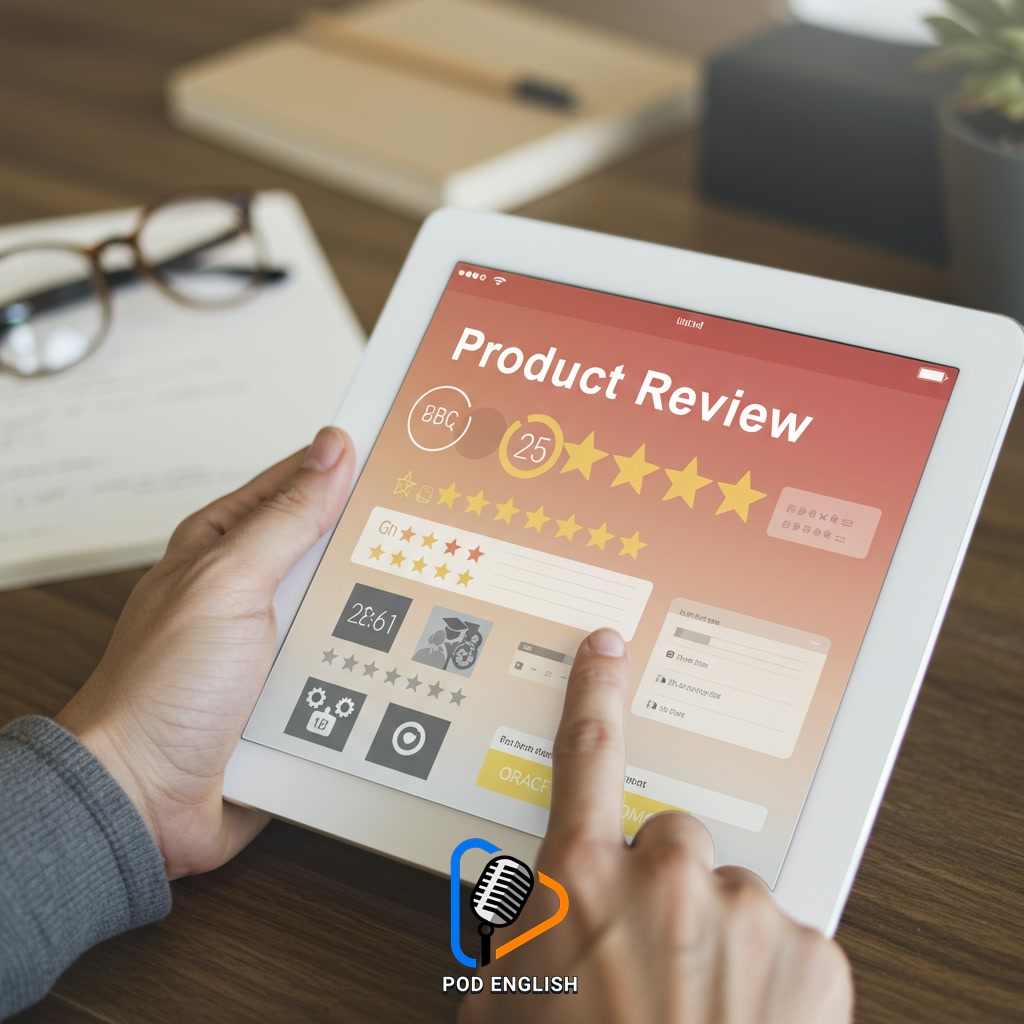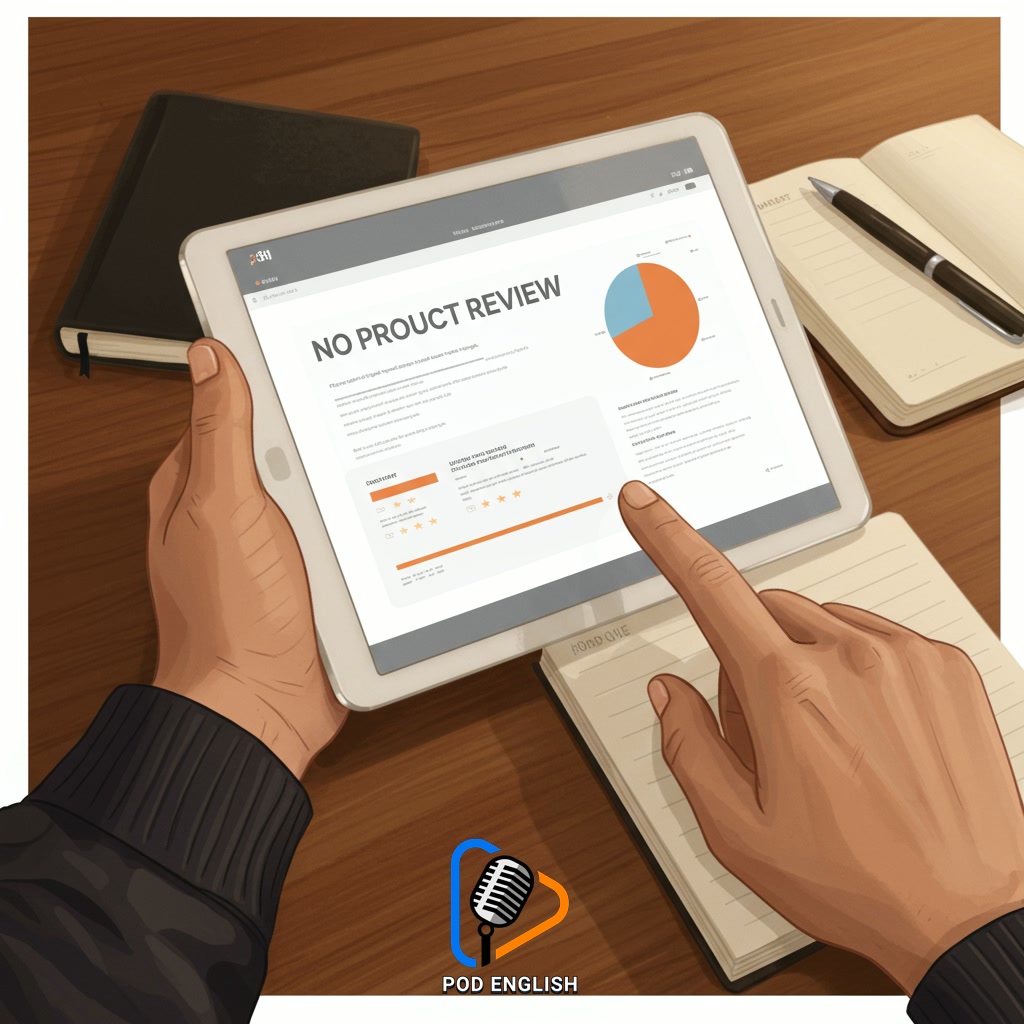Learn English
Unlock English Skills: A Practical Guide to Learning Through Product Reviews

This guide presents a practical method for enhancing English language proficiency. It details how utilizing product reviews can serve as an effective resource for language acquisition. Readers will learn techniques to improve vocabulary, comprehension, and writing skills by engaging with review content. This approach offers an interactive way to develop practical English communication abilities.
Table of Contents
- Section 1: Introduction: Why Use Product Reviews to Learn English?
- Section 2: Finding Your Learning Material: Where to Access Product Reviews
- Section 3: Active Reading and Listening: Techniques for Understanding Reviews
- Section 4: Building Vocabulary and Grammar: Extracting Language from Reviews
- Section 5: Putting Skills into Practice: Writing Your Own Reviews
- Section 6: Beyond the Basics: Advanced Learning Strategies with Reviews
- Section 7: Conclusion: Integrating Reviews into Your English Learning Routine
Section 1: Introduction: Why Use Product Reviews to Learn English?
Welcome to a practical guide on boosting your English skills using an everyday resource: product reviews. You might wonder, ‘Why product reviews?’ The answer lies in their real-world relevance and accessibility. Product reviews are written by people like you, sharing genuine opinions and experiences in natural, often informal, English. This makes them an excellent source for understanding practical language used in daily life. They expose you to diverse vocabulary related to countless products and situations, from technology gadgets to travel experiences. Reading reviews helps you grasp how English speakers express likes, dislikes, describe details, and structure arguments – all crucial elements for effective communication. Engaging with these authentic texts not only improves your reading comprehension but also provides models for developing your own writing and speaking abilities by showing you how to articulate opinions and share information. It’s an interactive way to connect language learning with practical, relatable content.

Introduction: Why Use Product Reviews to Learn English?
Section 2: Finding Your Learning Material: Where to Access Product Reviews
Now that you understand the value of product reviews for English learning, you might wonder where to find them. The good news is they are everywhere online! Excellent starting points include major e-commerce websites like Amazon, eBay, or Walmart, where countless products have user reviews. Dedicated review sites for specific categories, such as Rotten Tomatoes for movies, Goodreads for books, TripAdvisor for travel, or CNET for technology, also offer a wealth of material. Don’t forget app stores (like Google Play or Apple App Store) which feature reviews for millions of applications. Look for reviews on products you are genuinely interested in; this personal connection makes reading and learning more engaging. Explore different platforms to see the variety in language and writing styles.

Finding Your Learning Material: Where to Access Product Reviews
Section 3: Active Reading and Listening: Techniques for Understanding Reviews
Once you’ve found product reviews, the next step is to engage with them actively. Don’t just skim; read or listen carefully. As you read, try to identify the main points the reviewer is making. Are they focusing on the product’s features, its performance, or their personal experience? Look for keywords and phrases that express opinions, both positive and negative. If listening, pay attention to the speaker’s tone of voice – does it sound enthusiastic, disappointed, or neutral? Consider taking notes of new vocabulary or interesting sentence structures you encounter. This active approach helps you not only understand the specific review but also learn how English speakers express thoughts and feelings about products.

Active Reading and Listening: Techniques for Understanding Reviews
Section 4: Building Vocabulary and Grammar: Extracting Language from Reviews
Once you are actively reading or listening to reviews, focus on identifying new language. Look for words you don’t know, interesting phrases, or common expressions used to describe products or experiences. Pay attention to how adjectives and adverbs are used to convey opinions. Similarly, observe the grammar structures employed. Notice how sentences are constructed, how verbs are conjugated, or how comparisons are made. Keep a notebook or digital file specifically for recording this new vocabulary and grammar points. Try to understand the context in which they are used, as this helps with meaning and appropriate usage. Regularly review your notes and attempt to use the new words and structures yourself, perhaps by writing your own short review or summary.

Building Vocabulary and Grammar: Extracting Language from Reviews
Section 5: Putting Skills into Practice: Writing Your Own Reviews
Having learned how to identify useful vocabulary and phrases from reading and listening to various product reviews, the next crucial step is to actively use this language. This section guides you through the process of writing your own product reviews. Start by choosing a product you are familiar with and genuinely have an opinion about. Think about the structure you’ve observed in reviews: an introduction, description of features, discussion of pros and cons, and a concluding recommendation. As you write, make a conscious effort to incorporate some of the new words, expressions, and sentence structures you have encountered. Focus on clearly articulating your experience and opinion, using descriptive language to help potential buyers understand the product. Writing is an excellent way to solidify your learning and build confidence in expressing yourself in English.

Putting Skills into Practice: Writing Your Own Reviews
Section 6: Beyond the Basics: Advanced Learning Strategies with Reviews
Building on the foundational skills of identifying vocabulary and phrases, this section delves into more advanced techniques for leveraging product reviews for English learning. Go beyond simple word recognition to analyze the structure and tone of reviews. Learn to identify subtle nuances in language, understand how writers express opinions and biases, and recognize common rhetorical devices used to persuade readers. Practice summarizing reviews, comparing viewpoints across different reviews, and even attempting to write your own review using the language and structures you’ve observed. These strategies will help you develop a deeper comprehension of authentic English, improve your analytical skills, and enhance your ability to produce sophisticated written content.

Beyond the Basics: Advanced Learning Strategies with Reviews
Section 7: Conclusion: Integrating Reviews into Your English Learning Routine
This guide has demonstrated the significant potential of product reviews as a practical tool for enhancing your English skills. By incorporating the techniques discussed, from identifying new vocabulary and phrases to practicing comprehension and writing, you can transform everyday online content into valuable learning opportunities. The key to success lies in consistency. Make reading and analyzing reviews a regular part of your English learning routine, setting aside dedicated time each day or week. By actively engaging with authentic language in this practical context, you will build confidence and fluency, making tangible progress towards your language goals.

Conclusion: Integrating Reviews into Your English Learning Routine













